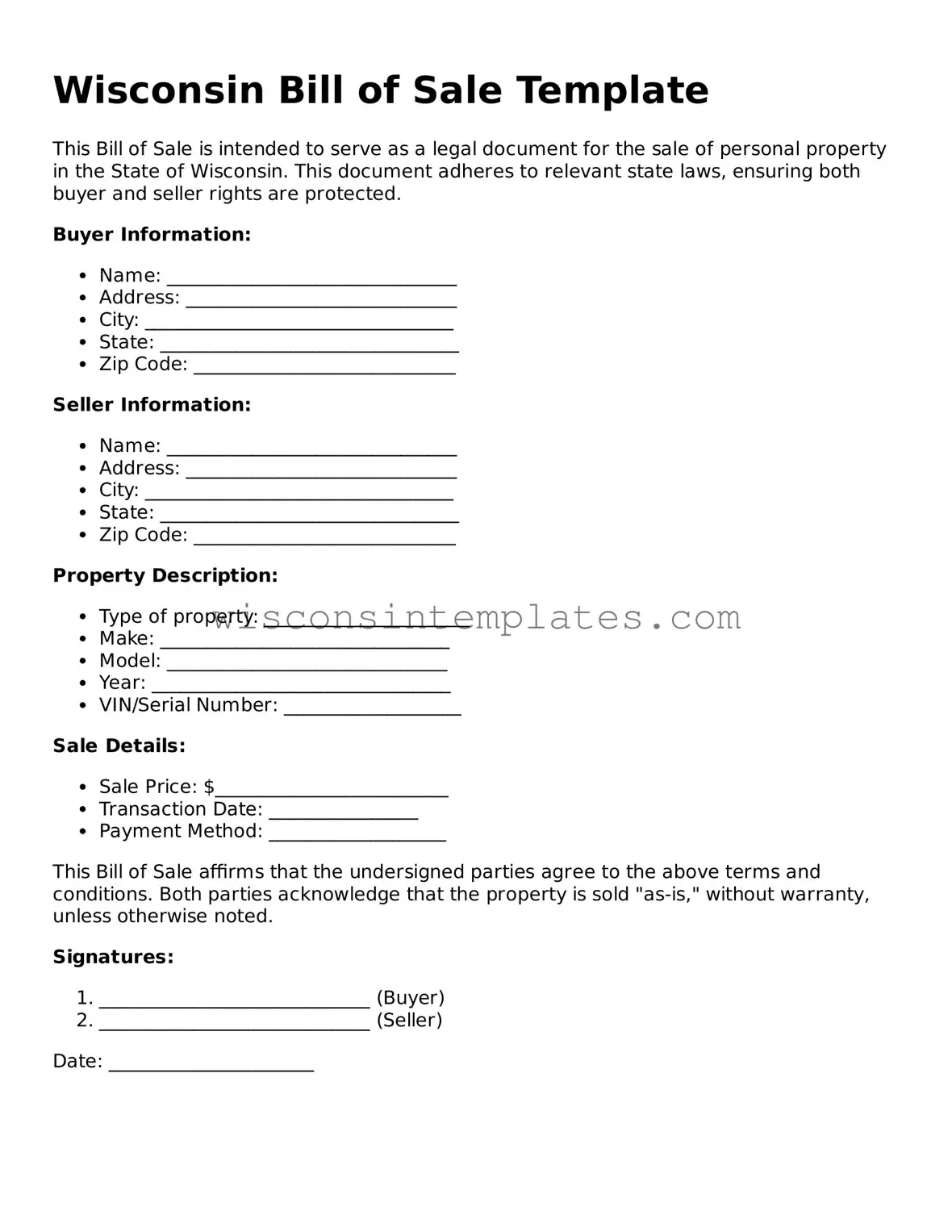Legal Bill of Sale Form for Wisconsin State
A Wisconsin Bill of Sale form is a legal document that serves as proof of the transfer of ownership of personal property from one party to another. This form is essential for both buyers and sellers, as it provides a record of the transaction and details about the item being sold. Understanding how to properly complete and utilize this form can help ensure a smooth and legally sound exchange.
Launch Editor Now
